25 OCTOBER 2010
YOUR WORDS
Readers are invited to add their comments to any story. Click on the article to see and add.
BTN DISTRIBUTION
BTN also goes out by email every Sunday night at midnight (UK time). To view this edition click here.
- COMMENT: The Government and the spending review
- 757 reaches its end
- Aer Arran gets help
- Aerolineas Argentinas
- Airbus and the freighter market
- American airlines in profit boast
- Automatic boarding gate reader
- Bahrain air show for 2012
- Boeing brings back in-flight broadband
- British Airways cabin staff dispute
- City airport gains routes
- easyJet brand
- Embraer gains large Phenom order
- Gatwick Airport investment
- Haneda gets ready
- London drops (part of) congestion charge
- Paris changes for Flybe
- Ritz-Carlton upgraded in Doha
- Stansted Express (or Stansted Slow)
- Tom Enders at the Aviation Club
- Viking confusion
- ON TOUR: The top vegetarian destinations
- CRUISE NEWS OCTOBER 2010
- HAPPY TALK: Down South America way
The Business Travel News
PO Box 758
Edgware HA8 4QF
United Kingdom
info@btnews.co.uk
© 2022 Business Travel News Ltd.
Aer Arran gets help
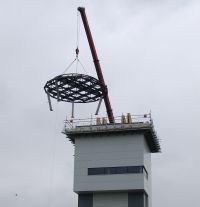 Stobart Plc, the listed UK transport operator, has confirmed an investment in Aer Arann, a move that should allow the Irish airline to exit examinership (the Irish version of US Chapter 11). See AERBT Monday 30 August. The move will give the company a “small stake” in Aer Arann in the form of a convertible preference share but would not involve it in the day-to-day management of the business. It is understood that current owner, Galway businessman Pádraig O’Ceidigh, will continue to be Aer Arann’s majority shareholder and the management team, led by Chief Executive Paul Schutz, will remain in place. The total investment in Aer Arann could top €4m, according to sources.
Stobart Plc, the listed UK transport operator, has confirmed an investment in Aer Arann, a move that should allow the Irish airline to exit examinership (the Irish version of US Chapter 11). See AERBT Monday 30 August. The move will give the company a “small stake” in Aer Arann in the form of a convertible preference share but would not involve it in the day-to-day management of the business. It is understood that current owner, Galway businessman Pádraig O’Ceidigh, will continue to be Aer Arann’s majority shareholder and the management team, led by Chief Executive Paul Schutz, will remain in place. The total investment in Aer Arann could top €4m, according to sources.
In December 2008 the Stobart Group acquired Southend Airport and is currently updating the operation significantly including the imminent opening of an on-site railway station with direct services to London Liverpool Street. As part of the arrangement with Aer Arann (who are also an Aer Lingus franchise operator), the airline will introduce, as yet undefined, services from the airport next March. www.stobartgroup.co.uk
American airlines in profit boast
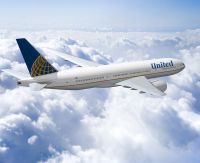 United Continental Holdings Inc, the newly merged holding company for the former United Airlines and Continental Airlines, published some very encouraging individual quarterly financial returns last week. The fourth quarter results will be combined.
United Continental Holdings Inc, the newly merged holding company for the former United Airlines and Continental Airlines, published some very encouraging individual quarterly financial returns last week. The fourth quarter results will be combined.
United reported a third quarter 2010 net profit of US$473m, an improvement of US$533m year-over-year. Continental has come up with US$367, a gain of US$365m on the previous figure.
All in all it was a good week for the major US carriers. American Airlines produced profits of US$143m for the quarter (as against a US$359m loss last year), Delta produced US$363m for the period (net loss US$161m in 2009), whilst US Airways produced US$240m, a record for the carrier for the three-month period. Low cost carrier Southwest Airlines reported a third-quarter profit of US$205m against a year-earlier US$16m loss as travel demand bounced back. www.unitedcontinentalholdings.com
Boeing brings back in-flight broadband
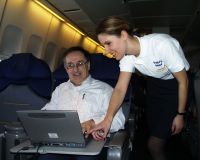 Panasonic Avionics and Boeing have combined to certificate a high-speed broadband system for the BBJ (Boeing Business Jet) 737. The fact that Boeing has acknowledged that perhaps it had previously made a mistake is to its credit. In August 2006 it announced the axing of its much praised but loss making Connexion system, stating that "the market for this service has not materialized as had been expected."
Panasonic Avionics and Boeing have combined to certificate a high-speed broadband system for the BBJ (Boeing Business Jet) 737. The fact that Boeing has acknowledged that perhaps it had previously made a mistake is to its credit. In August 2006 it announced the axing of its much praised but loss making Connexion system, stating that "the market for this service has not materialized as had been expected."
As part of the installation agreement, Panasonic will use a privately owned BBJ for ongoing testing and validation, as well as for live demonstrations. The system supports a wide range of passenger and crew applications including very high speed internet access to passengers anywhere in the world at speeds of up to 50 Mbps to the aircraft. That is much in line with most speeds currently available, about 100 times the speed of the fastest internet currently available on commercial aircraft.
It remains to be seen if the system is carried over to an airline operated aircraft. Panasonic will be offering as a 'after market' add on. www.boeing.com/commercial
easyJet brand
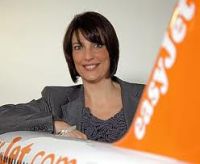 Sir Stelios Haji-Ioannou, the founder of easyJet, and (with his family) its major shareholder, has finally come to a deal with airline’s board which removes the possibility of the Luton-based operation having to find another name.
Sir Stelios Haji-Ioannou, the founder of easyJet, and (with his family) its major shareholder, has finally come to a deal with airline’s board which removes the possibility of the Luton-based operation having to find another name.
The new agreement will see Sir Stelios receive 0.25% of the airline's revenues annually, fixed at £3.9m and £4.95m for the first two years, plus £300,000 each year. Under the arrangement incremental brand revenue earned by the carrier will not be challenged by Sir Stelios.
Previously he had bitterly attacked the airline board's management strategy. This time around he described the agreement as a "win-win for all concerned".
Easyjet's chairman, Sir Mike Rake, said: "I'd like to thank Sir Stelios for his constructive approach to our discussions over the past week."
The settlement leaves recently installed easyJet boss Carolyn McCall, a former executive at the Guardian newspaper, with a relatively free hand to take the airline forward but with the Haji-Ioannou family’s 37% holding hovering not far away. www.easyjet.com
Haneda gets ready
 Tokyo Haneda Airport will officially return to the world of international aviation next Sunday (31 October), a number of carriers re-introducing long haul flights for the first time in over 30 years. With a 62m throughput last year, and a new runway, it could within a short space of time overtake Atlanta as the world’s busiest airport.
Tokyo Haneda Airport will officially return to the world of international aviation next Sunday (31 October), a number of carriers re-introducing long haul flights for the first time in over 30 years. With a 62m throughput last year, and a new runway, it could within a short space of time overtake Atlanta as the world’s busiest airport.
In 1978, with the opening of Narita, airlines were forced to move to the new Tokyo International Airport, always unpopular and 40 miles from the city centre.
Leading the rush back to the Tokyo Bay waterside operation is oneworld, headed by Japanese carrier JAL. The airline, Haneda’s biggest operator, currently has 184 daily departures serving 34 points across Japan. New flights will include Bangkok, Beijing, Hong Kong, Honolulu, Paris, Seoul, Shanghai, Singapore and Taiwan. Over the course of the next few months JAL will be joined by American Airlines (JFK) British Airways (Heathrow), Cathay Pacific (Hong Kong) and Qantas (Sydney).
oneworld will reduce its minimum connecting times for passengers arriving internationally to transfer to onwards domestic flights by 10 minutes to just 70 minutes. Domestic-to-international and from international-to-international will also be cut by ten minutes, to 70 and 50 minutes respectively. www.oneworldalliance.com
Ritz-Carlton upgraded in Doha
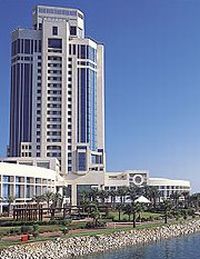 The Doha Ritz-Carlton has completed the first phase of a US$5.5m soft refurbishment. The project covered the hotel's 374 guest rooms and suites, which now feature wide-screen LCD TVs, wireless internet access and iPod docking stations. The renovation plan also included the hotel's lobby lounge, grand lobby and executive club lounge.
The Doha Ritz-Carlton has completed the first phase of a US$5.5m soft refurbishment. The project covered the hotel's 374 guest rooms and suites, which now feature wide-screen LCD TVs, wireless internet access and iPod docking stations. The renovation plan also included the hotel's lobby lounge, grand lobby and executive club lounge.
Situated on the waterfront with its own marina on the outskirts of Doha the property is close by the Doha Golf Club, home to the European PGA Tour's Qatar Masters. It also has a floodlit nine-hole academy course. The hotel itself offers a world-class Spa and fitness centre plus Indoor and outdoor swimming pools. A courtesy bus service is provided to both the airport and downtown centres. www.ritzcarlton.com
Viking confusion
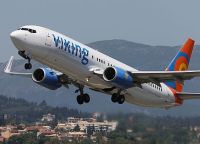 Gatwick Airport suffered some embarrassment last week when an aircraft belonging to Viking Hellas was mistakenly impounded due to debts owed by Viking Airlines.
Gatwick Airport suffered some embarrassment last week when an aircraft belonging to Viking Hellas was mistakenly impounded due to debts owed by Viking Airlines.
Viking Airlines AB, from Sweden, has suspended its winter programme and returned its aircraft to their lessors.
A statement from the Greek carrier said: “Viking Hellas immediately settled the small amount it actually owed and the aircraft was quickly released into service. Viking Hellas actually paid some invoices early as a result.”
Viking Hellas is a privately owned airline not directly connected to Viking Airlines other than sharing a similar name. Its routes include Iraq. Viking Hellas Airlines and Viking Airlines have co-operated operationally and commercially but are separately owned and managed and were not part of a group operation.
Viking Airlines AB aims to complete a restructure within the next three months and start operating again. Kiss Flights, which failed in August, was one of its key UK customers. www.vikinghellas.co.uk
HAPPY TALK: Down South America way
Staff at a certain South American airline are clearly oblivious to the modern world of security. It’s not that their country is remote from revolution and regular changes of government!
At this airline’s head office the main entranceway has an individual card reader activated door release.
Fine you might say.
Well it would be fine if it was not for a spare reader actually left dangling on the door.
All that people entering the office have to do pick it up, pass it over the pad and they are in. Anyone can do this, including your observant scribe, ready for an appointment with a senior executive. Whilst waiting he thought he might send an email and just popped on to the nearest computer.
Can we point out that airport security in the country in question seems fine.
COMMENT: The Government and the spending review
On the face of it the non-appearance of air transport in the Chancellor’s spending review looked like a complete oversight by the Government on this most essential part of the UK’s total commercial operation. We have fought ever since World War II to be a leading nation air transport wise. This position we do not want to throw away. The huge increase in APD next weekend might be the straw that breaks the camel's back.
The current Secretary of State for Transport, Phillip Hammond, remains largely invisible on airline matters, strange as his constituency of Runnymede and Weybridge is very much in the Heathrow employment area.
Yet is this lack of visibility a bad thing?
Does the Prime Minister want to make the mistake he clearly made in rushing through the cancellation of Heathrow’s third runway (which had met all the regulatory procedures) whilst promoting High Speed railway (HS2), a very worthwhile concept, but one that has enormous problems vested in it, both from a cost point of view, and regarding planning?
Heathrow T6, like Stansted from an earlier political deal, would have cost the Government nothing. HS2 and its successors is a financial disaster waiting to happen. Which scheme is better for UK Ltd? You don’t have to be a brain surgeon to work it out.
Let us hope that now with the pressure off in terms of meeting a 20 October deadline from the Treasury, Government can really assess just where it sits in terms of the commercial aviation scenario.
Let us hope that the coalition can come up with a practical air transport policy that is really forward thinking and will allow the British airline industry to retain its top position in the international marketplace, a position that it has great danger in forfeiting due to a lack of political foresight.
The Government has given itself a breathing space. Let us hope it will use it wisely.
Malcolm Ginsberg
Editor in Chief
Aerolineas Argentinas
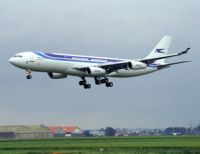 Buenos Aires (also see London non-stop next March) is to see a rise in Aerolíneas Argentinas frequencies to Auckland, Barcelona, Sao Paulo and Sydney next year.
Buenos Aires (also see London non-stop next March) is to see a rise in Aerolíneas Argentinas frequencies to Auckland, Barcelona, Sao Paulo and Sydney next year.
The Barcelona increase has already taken place with El Prat Airport now served non-stop four times weekly (up from three). Onward connections from Barcelona to Spanish and other continental destinations are in partnership with Air Europa.
From January 2011, Aerolíneas Argentinas will add a fifth frequency to Sydney and Auckland. All flights will be operated by two-class Airbus A340 aircraft.
On a more local front Sao Paolo (Brazil) will offer up to six services per day from 1 January. The four-hour flight is normally flown by a Boeing 737-700 in a two-class layout. From a marketing point of view the airline has an agreement with GOL Airlines of Brazil. www.aerolineas.com
Automatic boarding gate reader
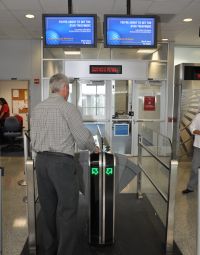 United Airlines (in its Continental mode) has introduced an automatic gate reader on an experimental basis using a single international pier at Houston (IAH). It is the first time such an operation has been tried in a North American airport although Lufthansa has been using the same system since 2003 and now has it on all its gates at Frankfurt and Munch Airports.
United Airlines (in its Continental mode) has introduced an automatic gate reader on an experimental basis using a single international pier at Houston (IAH). It is the first time such an operation has been tried in a North American airport although Lufthansa has been using the same system since 2003 and now has it on all its gates at Frankfurt and Munch Airports.
Passengers not happy with what Americans call ‘self boarding’ can always ask for help, staff available in any event for passport identification. The US Transportation Security Administration says the arrangement does not jeopardize security because all passengers are screened before they get to that point.
Continental staff told AERBT that whilst the reader does not speed up boarding to any great extent it does allow operatives more time to deal with other problems. www.continental.com
British Airways cabin staff dispute
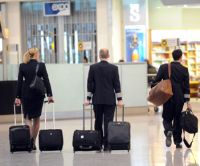 Unite, the trade union representing British Airways cabin staff, has agreed to put a recommended offer to its 11,000 members working for the airline. Details of the voting procedure have still to be confirmed. If accepted it will bring to an end a long running dispute that has severely impacted on BA’s bottom line, many potential passengers abandoning the airline in search of more guaranteed seats.
Unite, the trade union representing British Airways cabin staff, has agreed to put a recommended offer to its 11,000 members working for the airline. Details of the voting procedure have still to be confirmed. If accepted it will bring to an end a long running dispute that has severely impacted on BA’s bottom line, many potential passengers abandoning the airline in search of more guaranteed seats.
Under the arrangement cabin crew travel perks will be restored, but not fully until 2013, wage rises will be limited to a capped RPI+ figure, and an annual bonus of £6,616 will be paid to mainline staff in lieu of individual allowances.
The cost saving for the airline will be in the order of £60m per year and BA will be able to recruit new staff on a new/different (cheaper) contract. www.ba.com www.unitetheunion.org.uk
Embraer gains large Phenom order
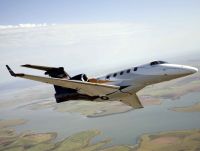 NBAA kicked off last Monday its 63rd annual business aviation show in Atlanta with a packed press conference learning that NetJets would place a 120 aircraft order (50 firm and 75 options) for Embraer’s Phenom 300 light jet.
NBAA kicked off last Monday its 63rd annual business aviation show in Atlanta with a packed press conference learning that NetJets would place a 120 aircraft order (50 firm and 75 options) for Embraer’s Phenom 300 light jet.
Worth US$1bn, it is a record commitment for business jets since the global economic crisis struck. Deliveries of the first 50 will commence in 2013 through to 2015 with 20% going to NetJets Europe.
“This is a tremendous endorsement for Embraer, now in our ninth year in business aviation and it will definitely help future sales,” said Embraer Chief Executive Fred Curado, who apparently only got the nod on Friday that they had won the closely fought contest. NetJets has previously purchased its business jets from US manufacturers. The intention, according to NetJets Chairman and CEO David Sokol, is to reduce the number of smaller cabin aircraft types in the fleet to two.
Meanwhile, the first Phenom 300 destined for European commercial charter is scheduled to be delivered to Oxford, UK-based FlairJet in November. Alison Chambers reports in full in next week’s AERBT. www.embraer.com www.netjets.com
London drops (part of) congestion charge
 Boris Johnson, Mayor of London, has confirmed his decision to remove the Western Extension Zone of the controversial Congestion Charge scheme by Christmas and to make a number of improvements including the introduction of an automatic payment system (CC Auto Pay) that will mean in theory that no one need ever be fined again.
Boris Johnson, Mayor of London, has confirmed his decision to remove the Western Extension Zone of the controversial Congestion Charge scheme by Christmas and to make a number of improvements including the introduction of an automatic payment system (CC Auto Pay) that will mean in theory that no one need ever be fined again.
62% of respondents to Transport for London’s (TfL) public consultation on the Western Extension backed its removal. The last charging day in the Western Extension will be on Christmas Eve, 24 December 2010.
On 4 January 2011 a number of other changes to the scheme will come into effect. This will include CC Auto Pay, which includes a discount (on what will be an increased charge – but in effect £9 per day) for registered credit card customers. Once in the system drivers need never worry whether they are in the zone or not. The charge is daily and not dependent on how many times the vehicle enters the congestion area or not. www.tfl.gov.uk/congestioncharge
Stansted Express (or Stansted Slow)
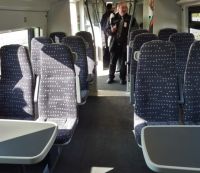 National Express East Anglia (NXEA), the operator of the Stansted to Liverpool Street airport service (and universally called the Stansted Slow – it has at least two stops en-route) has unveiled the first new Class 379 train at a special preview event at train manufacturer Bombardier Transportation UK’s Derby factory. The first train will not be actually introduced until next May due to testing requirements.
National Express East Anglia (NXEA), the operator of the Stansted to Liverpool Street airport service (and universally called the Stansted Slow – it has at least two stops en-route) has unveiled the first new Class 379 train at a special preview event at train manufacturer Bombardier Transportation UK’s Derby factory. The first train will not be actually introduced until next May due to testing requirements.
The trains have a top speed of 100 mph (160 km/h) and each 4-coach train will have 20 first class and 189 standard class seats. Features include an integral internal CCTV system for passenger safety, a wi-fi network, audio/visual passenger information system, luggage stacks and state-of-the-art train management system. www.stanstedexpress.com
ON TOUR: The top vegetarian destinations
Recent trends show that a vegetarian diet is continuing to become more popular, with many choosing the diet for environmental as well as dietary reasons. An estimated 3% of people in Western Countries are now thought to be vegetarian, and campaigns such Meat Free Monday, led by Stella and Paul McCartney, are highlighting the potential benefits to the environment of avoiding meat for one day each week.
There are still however many countries which have very few vegetarian foods on offer, for a variety of cultural, religious and historical reasons.
To mark the occasion of World Vegetarian Day earlier this month flight search site Skyscanner looks at the top five places for vegetarian food lovers, as well as taking a peak at some more extreme meaty destinations for the more dedicated carnivore.
India
India remains arguably the world’s finest vegetarian destination. With up to 40% of Indians thought to enjoy a meat free diet, there is an abundance of delicious vegetarian fare on offer across this huge country. Some entire towns, such as Pushkar, are meat free, which can be heaven for vegetarians who may often have their choices restricted to one or items on a menu.
Belgium
Last year the city of Ghent in Belgium became the world’s first to host a weekly ‘veggie day’, shunning the traditional fish and shellfish the town is famous for. Every restaurant in the town now features at least one vegetarian dish each Thursday, and schools will follow suit by giving children a meat free main meal at lunchtime.
Taiwan
There an amazing 6,000 vegetarian eating establishments in Taiwan, where an estimated 10% of the population follow a vegetarian diet. Taiwan is thought to have some of the world’s toughest food labelling laws as a result of the high proportion of vegetarians and also due to Buddhist law. Much of the vegetarian food in Taiwan is often very light sweet and different to other savoury Taiwanese food.
Birmingham, UK
With a multicultural population across the majority of its major cities, the United Kingdom offers fantastic vegetarian food. Birmingham ’s famous Balti Triangle is home to some of the country’s finest curry houses, many of which regularly win national awards. The city also hosts the UK leg of the Veggie Pride parade, which was simultaneously held in Prague, Milan and Lyon in 2009.
Turkey
Turkish food, often served in a delicious mezze platter containing several dishes, flatbreads and a variety of dips, is ideal for the vegetarian diet. The traditional foods of the Ottoman Empire, many of which are a fusion of Middle Eastern, Balkan and Asian influence, are hugely popular and include stuffed grapevine leaves (yaprak dolmasi) and baklava, a rich sweet pastry made with syrup and nuts. Even Turkish Delight is vegetarian!
And five places for your extreme meat fix…
Scotland
Scotland’s most famous dish, haggis, is notorious – although many people may not know what is inside the ‘delicacy’. Traditionally cased in sheep’s bladder, haggis is made from sheep’s heart, liver and lungs and is particularly popular across the country on Burn’s Night on the 25thof January, the annual celebration of the life of Scots’ poet Robert Burns.
South Korea
Eating dog is illegal in South Korea – apart from on one day per year. On the 17th of August each year, groups of South Koreans, mainly older men, tuck into dog as part of a celebration of the date which is known as ‘Malibok’ in the Korean lunar calendar. It is thought that despite the ban on eating dog, thousands of restaurants still serve up dog meat soup, with the animal estimated to be the fourth most popular meat in the country.
Spain
It is said that the Franco Regime of 1939-1975 strongly discouraged vegetarianism and associated it with the political left. Perhaps as a result, much of Spain’s food is strongly meat-based, with pig in particular a firm favourite in many tapas dishes. For something more unusual try stewed bull’s tail (Rabo de toro) originating in Cordoba, or Cojunodo, a slice of chorizo served on fried quail egg.
Slovenia
Horse lovers should probably steer clear of the Red Hot Horse take-away in the Slovenian capital of Ljubljana – one of the most popular dishes at the café is horse burger. Many Slovenian supermarkets also stock horse meat if you’d prefer to cook up a burger yourself.
USA
Notorious for their love of meat, the US has a range of restaurants claiming to offer the world’s largest steak. For something with a more distinctive taste, head to Florida – many eateries here offer Alligator on the menu.
Your Editor would like to add that for those real meat eaters the only place to go is the Argentine. Not only is the beef soft and delicious but you are only expected to order one helping for two customers. What you will be delivered is enormous. It’s no embarrassment to offer your dining partner a portion even at the finest restaurant.
About Skyscanner
Skyscanner is a leading travel search site providing instant online comparisons on flight prices for over 670,000 routes, and on over 600 airlines, including cheap flights, car hire and holidays. Fly to your food. www.skyscanner.net
757 reaches its end
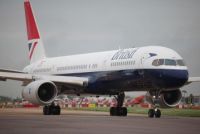 British Airways is to retire its last passenger Boeing 757 with a special flight on Saturday 6 November.
British Airways is to retire its last passenger Boeing 757 with a special flight on Saturday 6 November.
BA was one of two launch customers (along with Eastern Airlines in the USA), with their first aircraft being delivered in January 1983. In total BA operated 53 (including Caledonian Airways), the fleet flying an estimated total mileage of six hundred million miles, and carrying one hundred and thirty million passengers.
Currently fitted with 186 seats the Rolls-Royce powered aircraft was initially likened to the Boeing 707, but with two engines. In retirement most are finding a new life flying as freighters for ‘overnight package’ operators.
Ian Allan Aviation Tours have chartered G-CPET, one of the last aircraft, for a special “Champagne Farewell (return) Flight” to Manchester repainted in the airline’s 1983 “Negus & Negus” livery. Bookings are being taken from enthusiasts and former 757 crew. www.ianallantravel.com/aviationtours
Airbus and the freighter market
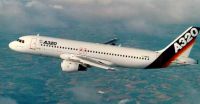 West Atlantic, Europe's largest regional cargo airline, is to become the world’s first operator of the Airbus A320 passenger to freight (P2F) conversion. The deal will provide for three aircraft to be delivered between the end of 2012 and mid-2013, with the option of a further four aircraft by 2015.
West Atlantic, Europe's largest regional cargo airline, is to become the world’s first operator of the Airbus A320 passenger to freight (P2F) conversion. The deal will provide for three aircraft to be delivered between the end of 2012 and mid-2013, with the option of a further four aircraft by 2015.
The Airbus A320 family includes over 4,300 aircraft already built and an additional 2,300 aircraft on order. Whilst the classic Boeing 737 family, which predates the Airbus 320 series by 20 years, has already been widely accepted by the air cargo industry, the more advanced fly-by-wire Airbus is a generation ahead in terms of technology.
Behind the deal is Dutch leasing company AerCap. In 2008 it contracted with Airbus on a programme to purchase and convert A320 and A321 aircraft into freighters with a capacity of 21 and 28 metric tonnes respectively (depending on variant), a 121-inch (3.1m) aft cargo door plus ETOPS long range capability.
Speaking at the Aviation Club (see elsewhere in this issue) Airbus boss Tom Enders noted that the manufacturer had not been “too bright” in the past regarding the air cargo business (hinting at the A380F fiasco). He said that the conversion project was the way forward and noted the delivery of the first A330F to Etihad. www.airbus.com www.atlanticairlines.co.uk
Bahrain air show for 2012
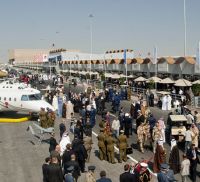 Farnborough International Ltd has agreed to assist in hosting the Bahrain International Airshow at Sakhir Air Base (Kingdom of Bahrain) from 19-21 January 2012. The inaugural show was held in January 2010, a very great success.
Farnborough International Ltd has agreed to assist in hosting the Bahrain International Airshow at Sakhir Air Base (Kingdom of Bahrain) from 19-21 January 2012. The inaugural show was held in January 2010, a very great success.
Already signed up are Bexair, Cessna, Gulfstream, Lockheed Martin, MENA Aerospace and TAG Aeronautics plus a number of companies established in the Gulf area.
The Middle East region has witnessed unprecedented growth within the commercial and private aviation sectors over the past decade and is the only region in the world where international traffic increased during 2009 by 11.2%, with a forecast to continue to expand at a similar rate, well into 2020. www.farnborough.com
City airport gains routes
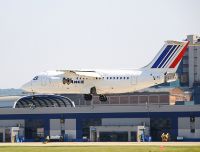 Florence (Italy) is the latest destination to be added to London City Airport’s route network. A six times per week Avro RJ85 service will be inaugurated by CityJet on Monday 10 January 2011. As a preamble the airline, part of Air France/KLM, will offer a limited service over the Christmas period.
Florence (Italy) is the latest destination to be added to London City Airport’s route network. A six times per week Avro RJ85 service will be inaugurated by CityJet on Monday 10 January 2011. As a preamble the airline, part of Air France/KLM, will offer a limited service over the Christmas period.
Florence Airport is a small, compact and easy to use operation with many similarities to London City Airport. It is a 15-minute four-mile drive from Florence, arguably the greatest city of the Italian renaissance (see AERBT 25 January 2010). The gateway to Tuscany, Florence has a wealth of museums, palaces and churches housing some of the world’s greatest treasures. Nearby cities include the port of Livorno and Pisa. Florence, and its hinterland, is the third-biggest industrial centre in Italy. Key export sectors are textiles (clothing and fashion), mechanical engineering, and chemicals and pharmaceuticals.
British Airways has also confirmed the re-introduction of Stockholm, but this time Arlanda rather than the city centre Bromma Airport. The twice weekdaily service starts on 9 January. www.cityjet.com www.ba.com
Gatwick Airport investment
 London’s Gatwick Airport is to benefit from a major redevelopment of its railway station, the busiest rail/airport operation in the country. It is part of a £1bn investment package by the new airport owners.
London’s Gatwick Airport is to benefit from a major redevelopment of its railway station, the busiest rail/airport operation in the country. It is part of a £1bn investment package by the new airport owners.
The scheme includes a new platform to address the existing bottleneck for services on the Brighton mainline; Improved passenger circulation on platforms 5 and 6 through the replacement of an existing stairway with an escalator and the installation of a new lift; refurbishment of the concourse area to provide better facilities for passengers and improved circulation; upgrade of the track and signalling to improve performance and reliability of trains passing through and travelling to/from the airport.
Separately the airport has announced the signing of a contract enabling Shiva Hotels Ltd to operate a new 192-room 'Hampton by Hilton' hotel, located in the North Terminal. It will offer 3-star accommodation for business and leisure travellers as well as provide facilities for conferences and events.
Subject to planning permission, the redevelopment work is expected to start in early 2011 and open its doors to passengers in time for the 2012 London Olympic and Paralympic Games. www.gatwickairport.com
Paris changes for Flybe
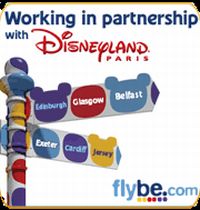 Flybe is making some important changes next weekend (Sunday 31 October) with its operations from the UK to Paris.
Flybe is making some important changes next weekend (Sunday 31 October) with its operations from the UK to Paris.
Perhaps the biggest alteration is the change to Orly for the three times daily Southampton service. Flybe becomes only the second ex-UK operation to serve the Paris West airport, which is much closer to the city centre than Charles de Gaulle.
At Charles de Gaulle itself the airline is moving from Terminal 1 (the original CDG terminal) to Terminal 2E, the main hub for Air France international connections, featuring a purpose-built commuter aircraft parking area. www.flybe.com
Tom Enders at the Aviation Club
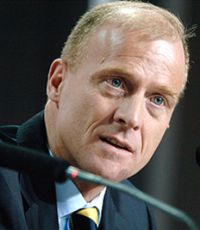 Airbus CEO Tom Enders, speaking to the London Aviation Club last week, confirmed that the EADS subsidiary would confirm future plans for its A320 series aircraft by the end of the year.
Airbus CEO Tom Enders, speaking to the London Aviation Club last week, confirmed that the EADS subsidiary would confirm future plans for its A320 series aircraft by the end of the year.
Both Airbus and Boeing face the dilemma of either offering an entirely new narrow bodied aircraft by the end of the decade, or re-engineering the existing airframe. Whilst upgrading the power units would cost a fraction of an all-out new plane, both companies are hesitant, with new aircraft introductions consuming an enormous amount of effort and resources.
Enders said that Airbus is “absolutely” on track to hand over at least 20 A380s to airline customers this year, meeting an earlier commitment. www.airbus.com
CRUISE NEWS OCTOBER 2010
This months ship review is the MV Eric - see below
 One story dominates the cruise news this month and that is the naming by Her Majesty of Cunard’s new flagship Queen Elizabeth at its traditional home port of Southampton.
One story dominates the cruise news this month and that is the naming by Her Majesty of Cunard’s new flagship Queen Elizabeth at its traditional home port of Southampton.
For the first time in its 175-year history Cunard (now owned by the US cruise giant Carnival) will have three ships named after Queens of England in it fleet, Elizabeth, sister ship Victoria, and Mary, which the company prefer to have the number 2 after the name.
One thing has emerged over the last week. Plans for her to show off against HMS Queen Elizabeth in perhaps 2016 can still be kept alive. The aircraft carrier was saved in the defence cuts.
The original Queen Elizabeth (83,000 tons) entered military service in 1940 and was finally decommissioned in 1969. Her much loved successor, QE2, also built on the Clyde, was actually smaller at 70,000 tons. Likewise a true Atlantic liner, but not as fast (Concorde launched at much the same time was somewhat quicker – by the 1970s there was no transatlantic race) she saw nearly 40 years of service finally bowing out in 2008.
Cunard could have been tempted to make Queen Elizabeth even larger than Queen Mary 2 (150,000 tons) but marketing and commercial considerations held and the new Queen is a sister ship to Queen Victoria (92,000 tons), not a liner in the true sense but a dedicated cruise ship, in many ways the culmination of a shipbuilding boom over the last ten years, a craft built for quality and allure, far from the gaudy design which some competitors see as the way forward.
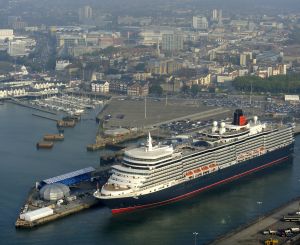 Today (25 October) Queen Elizabeth leaves Southampton for a 14-night Mediterranean cruise. On 14 December she goes transatlantic for the first time to spend the Christmas period in the Caribbean, but New Year’s Eve will be spent at sea on the way back to the Azores and Southampton once again. In what is a brilliant piece of publicity Queen Elizabeth then sets out on a 103-night Round the World Cruise, showing the flag and being made very welcome at what will be in every case a maiden port visit. She’s a very tight fit through the Panama Canal, but the Suez version will be easy.
Today (25 October) Queen Elizabeth leaves Southampton for a 14-night Mediterranean cruise. On 14 December she goes transatlantic for the first time to spend the Christmas period in the Caribbean, but New Year’s Eve will be spent at sea on the way back to the Azores and Southampton once again. In what is a brilliant piece of publicity Queen Elizabeth then sets out on a 103-night Round the World Cruise, showing the flag and being made very welcome at what will be in every case a maiden port visit. She’s a very tight fit through the Panama Canal, but the Suez version will be easy.
OUR TEN-STORY NEWS ROUNDUP
AdventureSmith Explorations, a specialist operation that matches adventure seeking clients and a treasure trove of small, expedition ships, has published its 2011 adventure portfolio. Packages include water-filled worlds from Patagonia to Alaska and points between on adventure-laden itineraries for small ship cruise aficionados.
Todd Smith, AdventureSmith Exploration’s (www.adventuresmithexplorations.com) owner and founder, said that demand is high for new ships and new destinations.
Typical is “Hawaiian Seascapes” featuring visits to five islands over eight days with time out for excursions by mule, optional golf, scuba diving and snorkelling. Camp Leakey – Faces in the Forest is an 11-day trip from Bali to Singapore and explores the wildlife, birds and culture of Borneo aboard the luxurious new 100-passenger capacity Orion II. Glacier Bay Adventure Cruise – this wheelchair accessible, six-day cruise for 12 passengers aboard Sea Wolf II is the only cruise to focus on Glacier Bay National Park. www.adventuresmithexplorations.com
Hapag-Lloyd has come together with technology innovator Siemens to provide a truly world wide cruising mobile phone service. Passengers aboard MS Europa make and receive mobile phone calls just like they do ashore. This is possibly thanks to a technological solution by Siemens AG called “MOGIS” (Mobile GSM Infrastructure over Satellite). MOGIS connects the cruise ship with a satellite which ensures that mobile phone calls can be conducted at all times worldwide.
The charges for each guest depend on the contract with their respective mobile phone provider. They are usually slightly higher than the standard roaming charges ashore, but also significantly lower than the current expensive satellite connection. The owner of the mobile phone will be billed for the charges directly by the mobile phone provider. www.hl-cruises.com
The mobile phone technology is operated by OnAir who are supplying a similar system to airlines.
MSC Cruises is to venture into the Gulf area later next year and in 2012.
Departing every Sunday from Dubai and every Friday from Abu Dhabi, the 2,069-passenger MSC Lirica will offer weekly seven-night sailings. Ports of calls will include Muscat (Sultanate of Oman), Al Fujairah (UAE), the island Kingdom of Bahrain and two unprecedented nights in Abu Dhabi and Dubai.
Land options include shopping, sand dune adventures, visits to beaches, museums, souks and a perfumery.
The 19-week season will run from 28 October 2011 until 9 March 2012. www.msccruises.co.uk
Oceania Cruises 1,250-guest Marina, scheduled for delivery in January 2011, successfully completed sea trials on 26 September, which included three days of sailing the Mediterranean for the first time.
During the sea trials, technicians and engineers from the Fincantieri shipyard along with Oceania Cruises' marine and technical teams evaluated the vessel's speed, manoeuvrability, hydrodynamics and propulsion, among many other aspects of the ship's performance.
The ship's inaugural schedule includes a 13-day Maiden Voyage 22 January from Barcelona to Miami, where inaugural activities are planned. On 8 February Marina departs on the first of two 18-day Panama Canal transits that visit San Francisco or San Diego, both new ports for Oceania Cruises. www.oceaniacruises.co.uk
Oriana, sister ship to the equally popular Aurora, has set out on its first ever autumn world cruise. The 84-night sell-out trip offers an alternative to the customary New Year departure. Oriana is calling at 28 ports in 19 countries including Acapulco (Mexico), Margarita Island (Venezuela), Kahalui (Hawaii), Phu My (Vietnam), Singapore and Ko Samui (Thailand).
Of the 1,710 passengers on board, one third will be on board for the full cruise, half of the remaining will be doing long cruises to or from Australasia – such as 49-nights from Auckland to Southampton – whilst the balance will join the ship at intervals for two or three week holidays on sectors of the itinerary. P&O Managing Director Carole Marlow says that the high bookings are a testament to the older travellers who seem to enjoy the longer cruises. www.pocruises.co.uk
P&O have published a study of over 65s finding that many envy the lifestyles of the young, with the majority (57%) saying they wished they had travelled more and 45% wishing they had quit their jobs and changed professions. This latest research reveals a 300% increase in “grey gap-years” since 2005 with the number of pre-retirement gap years now reaching 200,000 annually. These are also being fuelled by redundancies and the 90,000 people who choose to take a career break every year.
81% of adults are now considering taking longer and more adventurous trips with 49% of 55-64 year olds saying they would like to take time out to travel. www.pocruises.co.uk
Paul Gauguin Cruises is offering children free access to its revolutionary Ambassadors of the Environment Youth Programme on two nine-night Society Islands holiday voyages departing 18 and 27 December 2010. This programme is usually available for a fee of US$269 per child.
Explorer and environmentalist Jean-Michel Cousteau (son of naturalist Jacques Cousteau) created this unique, groundbreaking programme to introduce young travellers to the extraordinary natural wonders of French Polynesia. Parents are encouraged to join children on eco-excursions and other activities onboard and on shore, making the programme a great activity for families. Both voyages start and finish in Papeete and visit Fakarava, Huahine, Bora Bora, Taha'a and Moorea. www.pgcruises.com
Saga's classic cruise-liners Saga Ruby and Saga Pearl II will be setting sail in opposite directions to mark the start of the 2011 schedule. Departing from Southampton within just a day of each other, both ships will be heading off for exciting adventures across the globe, with Saga Ruby bearing east and Saga Pearl II making her inaugural journey west.
Saga Ruby’s cruise (5 January) is in an easterly direction through the Mediterranean takes in 110 nights covering an impressive 32,676 nautical miles. The previous day Saga Pearl II will be host to the Grand Voyage, an epic adventure around the Caribbean and South America. This one is a little bit shorter, just 77 days. Both cruises also offer shorter fly-and-cruise options for passengers who have limited time. www.sagacruising.co.uk
Star Clippers, with its three genuine sailing ships, is to concentrate on the Mediterranean for the summer of 2011. The Monaco-based, Swedish-owned operation will make maiden visits to Chios, Kos, Myrina (Lemnos), Sarti (Halkidiki), Skopelos, Skiathos, Skyros, Poros in Greece; Canakkale and Istanbul in Turkey.
Many of the ports are tiny and can only be accessed by the ships’ tenders and Zodiacs. Star Flyer (170 passengers maximum) with seven-night cruises between Athens and Istanbul whilst sister ship Star Clipper will also be based at Athens but essentially concentrate on the Greek Islands. Royal Clipper, Star Clippers' 228-passenger flagship, will operate seven, ten and 11-night Mediterranean cruises from Civitavecchia, the port for Rome and Venice. Monaco is fitted in for the Grand Prix. www.starclippercruises.co.uk
The Passenger Shipping Association (PSA) has published figures that show that 448,000 passengers visited a UK port in 2009, a 7% increase on the previous year, while the number of passengers joining their cruise ship in the UK increased to 733,000, just under half the total of passages sold.
Figures released this week by the European Cruise Council show that 4.8m passengers joined their cruise in Europe in 2009, spending €1.3bn on services (+7.6% on 2008) and €1.45bn (+1.7%) while visiting ports. www.the-psa.co.uk
SHIP REVIEW: MV Eric
 There are cruise ships and there are cruise ships and your Editor is fortunate in having passed passage in many, from big to small, from Queen Mary 2, to the equally wonderful 50-guest Hebridean. And he has river cruised in what are relatively narrow ships with limited facilities (for both passengers and crew), and even on the Thames and the Canal du Midi in the south of France. They all have their good points, and also some aggravations.
There are cruise ships and there are cruise ships and your Editor is fortunate in having passed passage in many, from big to small, from Queen Mary 2, to the equally wonderful 50-guest Hebridean. And he has river cruised in what are relatively narrow ships with limited facilities (for both passengers and crew), and even on the Thames and the Canal du Midi in the south of France. They all have their good points, and also some aggravations.
Now added to the list is MV Eric, one of three virtually identical vessels (Letty and Flamingo are the sisters) built about 20 years ago and custom designed specifically for cruising in the Galapagos archipelago. With a top speed of 12 knots (but 8 most of the time), the yachts possess highly sophisticated navigational and mechanical equipment and are equipped with solar panels and wind turbines which supply 70% of the electrical power used on the ship.
All are operated by Ecoventura, a specialist tourism company based in Miami.
Actually on the Equator and brought to the world’s attention by Charles Darwin with his extraordinary “Evolution of the Species” explanation (1855), the Galapagos islands lay 500 miles off the coast of Ecuador. Getting there from Europe is not as difficult as it sounds, yours truly routing Continental London – Houston – Quito (and more anon) and then to Guayaquil, the country’s largest city and major port. From here modern jet services are offered to two islands, San Cristobal and Santa Cruz. There are plenty of alternative flights to both main Ecuadorian cities, mainly from Madrid and Miami.
AERBT will be reporting on both Ecuador and the Galapagos at a later date.
There were nine crew on Eric plus two excellent naturalists, who double up as guides and ship organisers and are also the scuba and snorkelling experts. The working arrangement seems to fit together very happily. The ship is equipped with a pair of Zodiac style craft, used as tenders and lifeboats. Also available are a pair of kayaks. Wet suits (the water can be quite cold) and underwater equipment are supplied. Boarding is via a platform at the stern.
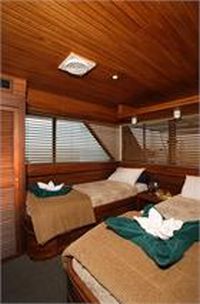 Accommodation: Considering the size of the ship (86ft long with a beam of just 24ft) the cabins are surprisingly spacious and well fitted out with rosewood trimmings and plenty of hooks and storage space. Toiletries and fresh towels are provided.
Accommodation: Considering the size of the ship (86ft long with a beam of just 24ft) the cabins are surprisingly spacious and well fitted out with rosewood trimmings and plenty of hooks and storage space. Toiletries and fresh towels are provided.
There are just ten cabins located on three decks with mostly single beds although some down by the waterline have a bunk. The two mid-deck offerings, at the stern and on the same level as the ship’s restaurant and social area, have double beds, but only single access. This can be “interesting” in the middle of the night.
Courtesy bottled water is supplied throughout the ship. However being in a fragile ecological area guests are asked to refill from a large container in the social area, rather than open a new bottle. Perhaps some other cruise lines, who charge excessively for water bottles and make it difficult for guests to refill, could emulate.
All cabins have a largish private area with a freshwater hot and cold shower, toiletries, hair drier, electric points and fresh towels. Somewhat basic and antiquated air conditioning is provided but it never got really that hot, even when off-ship on the islands.
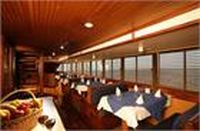 Dining: Perhaps this is the one element that lets the ship down. Whilst passengers are on board for the Galapagos tour, not a cruise experience, the holiday is not cheap and with a little effort the dining could be improved substantially. In terms of volume you will not go hungry but at breakfast for instance the cook could easily provide for an individual egg station. A vegetarian offering was always offered and usually a soup course, and it was generally a choice of chicken or beef, or both.
Dining: Perhaps this is the one element that lets the ship down. Whilst passengers are on board for the Galapagos tour, not a cruise experience, the holiday is not cheap and with a little effort the dining could be improved substantially. In terms of volume you will not go hungry but at breakfast for instance the cook could easily provide for an individual egg station. A vegetarian offering was always offered and usually a soup course, and it was generally a choice of chicken or beef, or both.
Lunch was self-service and in the evening the sole waiter (who doubled as the bar attendant) served at the fixed (in that they were fixed to the floor) tables. Clients could sit where they liked and a nice touch was the Captain’s table (ex-Ecuadorian Navy) where all the guests were invited in rotation and wine provided.
Soft drinks came courtesy of Ecoventura, as well as a welcome and departure cocktail. Nuts and savouries were always available and with just 20 guests maximum a private house atmosphere was always retained. English is the public language of the ship (Spanish the working).
 Entertainment: This is neither provided or required. Every evening the naturalists give a talk on the background to the next day’s activities and detail the programme. It is normally half a day water sports (or resting) with the balance visiting an island or two. A couple of large flat screen TVs support the talks, and these are also useful in viewing the large DVD library.
Entertainment: This is neither provided or required. Every evening the naturalists give a talk on the background to the next day’s activities and detail the programme. It is normally half a day water sports (or resting) with the balance visiting an island or two. A couple of large flat screen TVs support the talks, and these are also useful in viewing the large DVD library.
Naturally of course “crossing the line” is celebrated in traditional style. On this particular trip not a single soul smoked (nor much in Ecuador generally with its ‘eco’ philosophy the country for the most part is ‘non-smoking’). The whole cruise was an early to bed and early to rise affair, our travelling companions ranging from a Hollywood publisher to a Canadian university Don. Everyone got on very well. On the last night one of the naturalists provided a fine DVD slide show of the whole trip, and then offered courtesy copies to everyone, a nice touch.
 On Board Services: There is an inter-cabin communication system and a small library. No medical staff is provided, the Captain doubling up as a Navy style nurse, the Naturalists also trained in this area. Your cabin is attended to by a steward but for most things it is a question of self-service although assistance was at hand when a guest needed to dine privately due to tummy troubles.
On Board Services: There is an inter-cabin communication system and a small library. No medical staff is provided, the Captain doubling up as a Navy style nurse, the Naturalists also trained in this area. Your cabin is attended to by a steward but for most things it is a question of self-service although assistance was at hand when a guest needed to dine privately due to tummy troubles.
You are cut off from the world with only the ship’s company radio available most of the time. No TV (we did not even know that the Chilean miners had come to the surface) and both internet and phone facilities are very limited. The Galapagos is not cell phone friendly except close by the four inhabited islands.
What Else: Unlike some of even the largest passenger ships you can stroll right around the ship on what could just about be called the promenade deck. For those who wish to return home even more brown the large sun deck is ideal.
The bridge is always open for visitors and clients are allowed to steer the vessel, under supervision. The engine room is open too. And Peter the Captain is happy to have a chat. Like virtually all the crew he has been with the company many years.
From time to time Dolphins accompany the ship, and Whales can be seen too.
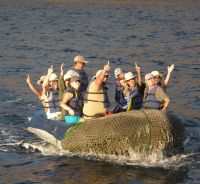 In Conclusion: Only 85 ships are licensed to operate fare paying passenger services in the Galapagos. Many of these are very small private yachts (indeed some with sails). There are several ships in the 75/100 category but don’t expect big cruise liner hospitality and facilities. In fact the guide to passenger ratio is nearer 16:1 rather than the 10:1 on Eric.
In Conclusion: Only 85 ships are licensed to operate fare paying passenger services in the Galapagos. Many of these are very small private yachts (indeed some with sails). There are several ships in the 75/100 category but don’t expect big cruise liner hospitality and facilities. In fact the guide to passenger ratio is nearer 16:1 rather than the 10:1 on Eric.
The seas around the Galapagos for the most part look calm. This is misleading. The mostly squat ships used around the islands can find the weather demanding depending on the wind direction. No big waves but bumpy, for the most part during night crossings. Just be prepared.
MV Eric and her sisters supply an experience. They are not true cruise ships and are purpose-built for the job they do. Ecoventura supplies a quality product for people interested in nature, and those others who want to learn. www.ecoventura.com
Reports on the Galalagos and Ecuador itself will feature in the coming months. See also www.metropolitan-touring.com


